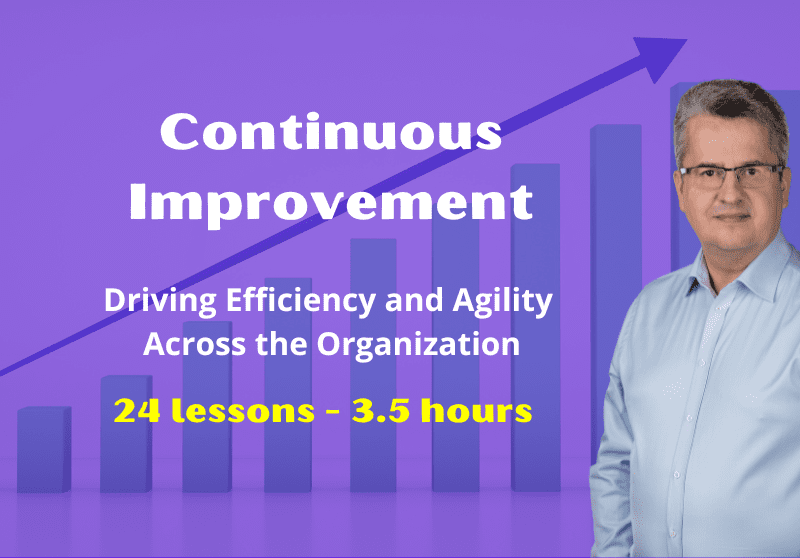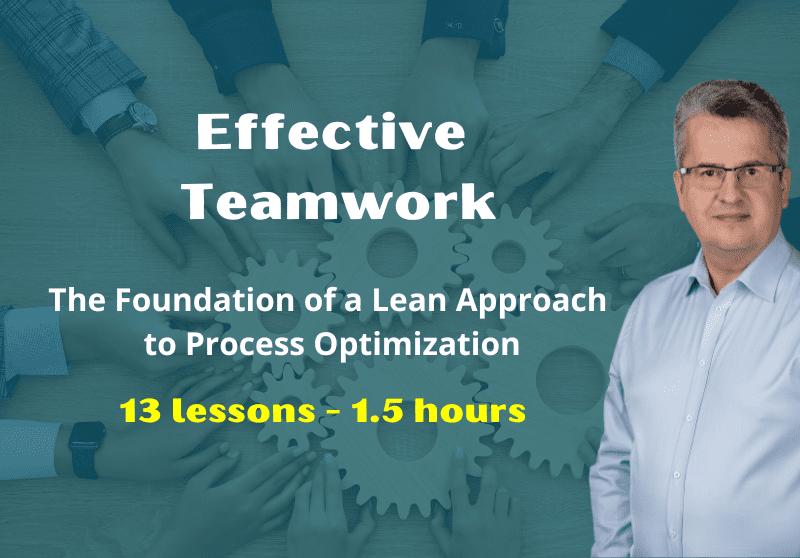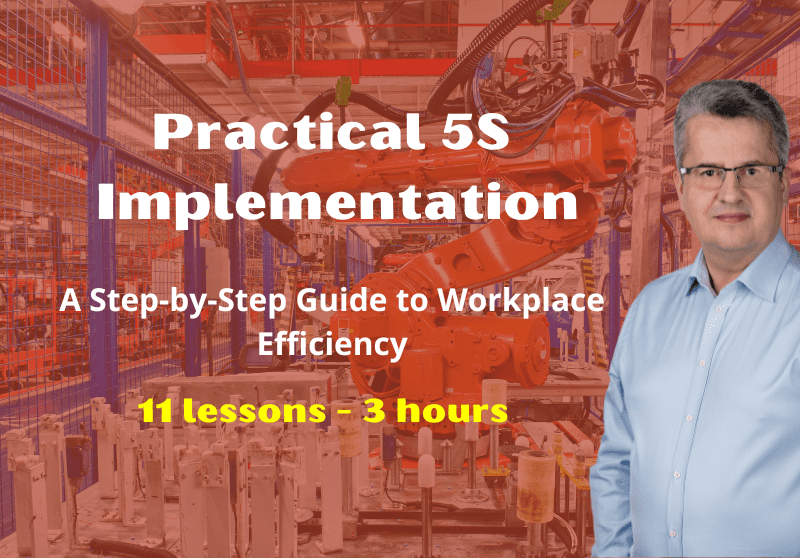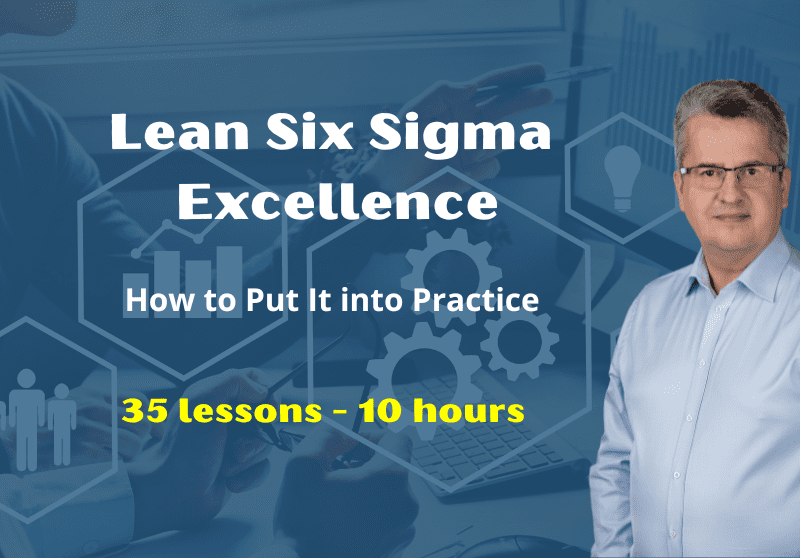The Importance of Problem Solving - 8,34 min
This lesson will discuss the key aspects of effective problem-solving in a company. We will focus on how this process impacts organizational efficiency and why even the best initiatives can fail without it. Additionally, we will present the Kaizen philosophy as an example of a continuous improvement approach and demonstrate how small changes can lead to lasting results.
Types of Problems - 6,05 min
This lesson will discuss organizations' three main problems: situational, systemic, and strategic. Each category has distinct characteristics and requires a specific approach to resolution. We will explore how situational problems arise from immediate challenges, systemic issues stem from process inefficiencies, and strategic difficulties influence long-term decision-making. Understanding these differences is essential for implementing practical solutions and ensuring continuous organizational improvement.
Levels of Problem Solving - 10 min
This lesson covers the different levels of problem-solving, from operational issues requiring immediate action to systemic problems that need process improvements to strategic challenges that demand long-term planning and managerial involvement. Understanding these levels helps organizations implement effective solutions, prevent recurring issues, and drive continuous improvement, ensuring stability and competitiveness.
Creative Thinking vs. Analytical Thinking - 8,49 min
In this lesson, we will focus on two fundamental approaches to problem-solving: creative and analytical thinking. We will discuss their differences, applications, and how they complement each other. Additionally, we will explore practical techniques and tools that support each approach and demonstrate how to use them in various stages of the process.
Brainstorming Technique - 4,49 min
In this lesson, we will explore brainstorming – one of the most effective techniques for fostering creative thinking. We’ll examine how this process works, its effectiveness, and the key principles to follow for maximum results. Special emphasis will be placed on creating an environment that encourages free idea generation and supports innovation.
Problem-Solving Process - 2,26 min
This lesson will discuss a problem-solving process based on eight essential steps. We will focus on their practical application to understand how they contribute to achieving sustainable results. This process helps effectively address current problems and supports continuous improvement within the organization. We will analyze each step to identify how it facilitates problem identification, analysis, and resolution while preventing recurrence.
Identifying the Problem or Losses - 5,07 min
In this lesson, we will cover the first and fundamental step of the problem-solving process – identifying the problem or loss. We’ll examine why precise problem definition is critical for the success of the entire process and how to avoid pitfalls such as misdiagnoses or incomplete understanding of the situation. Identifying the problem helps direct subsequent actions and focus on priority areas requiring intervention.
Defining the Problem and Choosing the Topic - 8,06 min
This lesson will focus on clearly defining the problem, a critical step in the problem-solving process. We will discuss why it’s essential to precisely identify what’s wrong and how to avoid pitfalls associated with vague problem descriptions. We will introduce practical techniques to help better understand the situation and prepare an effective action plan.
Gathering and Analyzing Information- 20,25 min
This lesson will focus on the third step of the problem-solving process: gathering and analyzing information. We’ll discuss why accurate and systematic data collection is critical for identifying the root causes of the problem and which techniques and tools can support this stage. You will learn how to combine quantitative and qualitative data to comprehensively understand the situation and better prepare for designing effective solutions.
Determining the Root Cause - 5 Whys Method - 17,59 min
In this lesson, we’ll move on to the fourth step in the problem-solving process: identifying the root cause. We’ll focus on the methods and tools that help uncover the trustworthy source of the issue rather than just addressing its symptoms. This critical step enables us to implement lasting solutions and avoid recurring challenges.
Selecting a Solution and Countermeasure - 21,32 min
This lesson will discuss the key aspects of cost-benefit analysis and decision-making in implementing proposed solutions. You will learn how to effectively assess actions' profitability and manage the organizational change implementation process.
Assessment of the solution - 6,4 min
This lesson will teach us how to evaluate and select the best solution by considering feasibility, costs, and impact. We will explore key decision-making tools to ensure effective implementation, such as brainstorming and cost-benefit analysis. Additionally, we will address factors like human influence, material efficiency, measurement accuracy, and process optimization to drive sustainable improvements.
Appllying the Solution - 9,14 min
This lesson will focus on the critical phase of implementing solutions. We will explore key steps, including careful planning, structured execution, and continuous monitoring to ensure effectiveness. The PDCA cycle will guide the process, helping us test, evaluate, and refine solutions. We will also introduce Poka-Yoke to prevent errors and improve reliability. Additionally, we will discuss Standard Operating Procedures (SOPs) as essential tools for maintaining efficiency and consistency in implementation.
Confirming the Effectiveness of the Solution - 5,08 min
In this lesson, we will focus on confirming the effectiveness of implemented solutions. We will conduct operational tests, analyze performance data, and compare pre- and post-implementation results to ensure measurable improvements. Emphasis will be placed on monitoring long-term trends, identifying potential deviations, and taking necessary corrective actions. Additionally, we will establish continuous process control, regular audits, and documentation updates to sustain the achieved results and prevent issues from recurring.
Establishing the solutions - 3,25 min
In this final step, we focus on solidifying the implemented solutions, ensuring they become a lasting part of the organization’s daily operations. We will cover standardization by updating procedures, integrating new standards, and communicating changes effectively. Employee training will be crucial in embedding these changes, combining theoretical learning with practical application. Additionally, we will establish a system for ongoing monitoring, certification, and post-training support to maintain effectiveness. This ensures that the improvements are sustainable and contribute to continuous organizational growth.






Sebastian Bennet –
A practical course that equips teams and leaders with Lean problem-solving techniques to drive innovation and achieve breakthrough results.
Smriti Parmer (verified owner) –
This course on Lean Problem Solving exceeded my expectations.
Aditi Kaur (verified owner) –
The concepts are presented clearly with practical examples that make it easy to understand and apply in real-world scenarios.
Briella Perkins (verified owner) –
This course empowers leaders to solve problems effectively and efficiently.
Luc Bos (verified owner) –
This course opened my eyes to a lot of new ideas and information, particularly in the areas of innovation and creativity.
RootFixer –
Finally, a clear framework for solving recurring issues
Process Wizard –
I liked how the course broke down problem solving into manageable steps. It gave me confidence to tackle bigger challenges